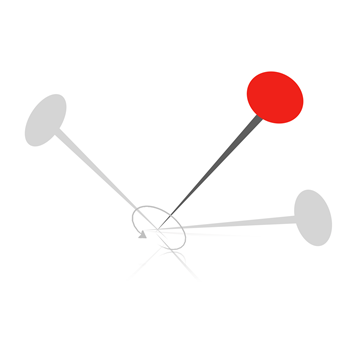
Pivot
PUBLISHED:Resource Summary
A pivot describes the central point, pin, or shaft on which a mechanism turns or oscillates; while the mechanism turns or oscillates, it continues to stay anchored or grounded on its pivot. In his blogpost, Eric Ries proposes the concept of the pivot to refer to “how successful startups change directions but stay grounded in what they've learned. They keep one foot in the past and place one foot in a new possible future.”
This tool invites deliberation on what new directions to pivot to when efforts seem to stall, or when it feels like the idea is getting stale, and yet still be grounded in what matters about the idea: When should one pivot to a new direction, instead of jumping ship? What does one needs to stay grounded on?

-
-
-
-
-
-
Support PZ's Reach